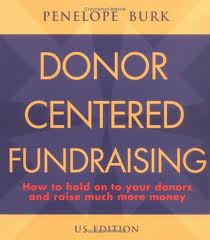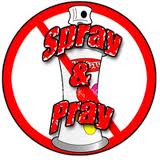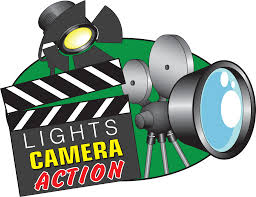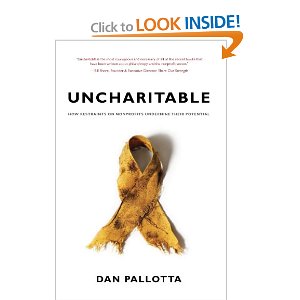 Last week I was out with a friend for a glass of wine after work. We hadn’t seen each other in a few months, and we were catching up on lost time. “How are you? How is the new job? How’s your wife? Kids? Grandkids?” You know the drill. It was during this exchange that he dropped the bomb: “So, how is your partner? Ya know … the only time I ever see him is when he is asking me for a donation.”
Last week I was out with a friend for a glass of wine after work. We hadn’t seen each other in a few months, and we were catching up on lost time. “How are you? How is the new job? How’s your wife? Kids? Grandkids?” You know the drill. It was during this exchange that he dropped the bomb: “So, how is your partner? Ya know … the only time I ever see him is when he is asking me for a donation.”
I’ve been doing non-profit work for a long time now, and I’ve trained myself to recognize this for what it is worth. Whenever I hear donors say something like this, I immediately think of it as a cry for help. It is a donor who is screaming for attention. They want to know:
- Was my contribution appreciated?
- Is my contribution being put to work in the manner in which I was told it would be during the solicitation visit?
- Is my contribution making an impact?
This is classic Penelope Burk stuff right out of her book “Donor Centered Fundraising“.
 What does your donor communication program look like? Does it include:
What does your donor communication program look like? Does it include:
- newsletters
- bulk email / eNewsletters
- annual reports
- impact bulletins
- computer generated gift acknowledgement letters
- handwritten letters
- donor recognition societies (featuring stewardship activities)
- donor receptions
- donor surveys and focus groups
I suspect many of you utilize some of these best practices, but are you missing the most powerful and simple stewardship activity of them all? My gut feeling tells me that the answer to this question is probably ‘YES’.
If you are using a “prospect assignment process” that allows you to pair prospects with volunteer solicitors who they know well, then you need to take it one step further and design a stewardship program around those relationships.
You should not assume that two people who know each other fairly well don’t lose touch with each other. It happens all the time. Take a moment to mentally review everyone in your life with whom you own a phone call, email or letter. I bet that list is longer than you originally thought.
If you want to improve your donor loyalty rate (and stop losing donors for silly reasons), then I suggest you do these two simple things:
- Amend your written volunteer solicitor job description to include one more task that includes two personal touches (e.g. phone call or sit-down meeting). The first conversation is a simple touch focused on saying thank you and updating them on how their contribution is being used. The second touch is equally as simple with a reiterated message of appreciation and an update on how their contribution is having an impact.
- Develop a tickler system and poke your volunteers when it is time to make these two calls. We’re all busy, and reminders are necessary. You shouldn’t expect your volunteer solicitors to remember when stewardship calls should be made.
 These personal touches do not have to be all about your non-profit organization. I suggest that you train your volunteers to be less obvious. For example, both stewardship touches could be as simple as three minutes worth of messaging in the middle of a lunch meeting or after-work cocktail. It should feel organic and nature. It shouldn’t feel forced or contrived.
These personal touches do not have to be all about your non-profit organization. I suggest that you train your volunteers to be less obvious. For example, both stewardship touches could be as simple as three minutes worth of messaging in the middle of a lunch meeting or after-work cocktail. It should feel organic and nature. It shouldn’t feel forced or contrived.
Making these additions to your donor communication program will likely improve your donor loyalty rates, but it should also help your volunteers become better solicitors . . . less reluctant and more confident.
If there is one thing I hear all of the time from volunteers, it is how fearful they are with “over-soliciting” their friends for charitable gifts. I believe this is rooted in the fact that volunteers aren’t involved in the stewardship process. So, they have doubts that the right things are being done in between solicitation calls to demonstrate return on investment.
So why not involve them?
Oh yeah . . . there is one more added benefit to adding these tactics to your stewardship plan. You end up stewarding your volunteer solicitors at the same time because you are providing them updates to share with their friends and your donors.
Does your agency have something like this folded into its stewardship program (e.g. Moves Management)? If so, how well does it work for you? Have you tracked your success? What was the impact on your retention rates? What were your challenges and how did you overcome them? Please use the comment box below to share your thoughts and experiences. We can all learn from each other.
By the way, my partner is a subscriber to this blog. So, my shout out to him is: “I think you should reach out to you-know-who and schedule time to catch up over a glass of bourbon.” 😉
Here’s to your health!
Erik Anderson
Founder & President, The Healthy Non-Profit LLC
www.thehealthynonprofit.com
erik@thehealthynonprofit.com
http://twitter.com/#!/eanderson847
http://www.facebook.com/eanderson847
http://www.linkedin.com/in/erikanderson847

 Welcome to O.D. Fridays at DonorDreams blog. Every Friday for the foreseeable future we will be looking at posts from John Greco’s blog called “
Welcome to O.D. Fridays at DonorDreams blog. Every Friday for the foreseeable future we will be looking at posts from John Greco’s blog called “ As time passes, the waves of change crash against your seemingly rock solid organizational exterior, but change is slowly occurring. Here are just a few examples:
As time passes, the waves of change crash against your seemingly rock solid organizational exterior, but change is slowly occurring. Here are just a few examples:
 The concept of “spray and pray” in resource development is simply sending out many appeals (aka shotgun effect), and then waiting for (aka hoping and praying) that enough donors respond so that you can make your goal. “Spray and pray” doesn’t just refer to direct mail. Back in the day, I used it in annual campaigns where I asked fundraising volunteers to identify five people from their social network, sit down with them in-person, and ask for a pledge or contribution. If your fundraising program is still loaded with “spray and pray” strategies, then you’re probably struggling because those days are long since over.
The concept of “spray and pray” in resource development is simply sending out many appeals (aka shotgun effect), and then waiting for (aka hoping and praying) that enough donors respond so that you can make your goal. “Spray and pray” doesn’t just refer to direct mail. Back in the day, I used it in annual campaigns where I asked fundraising volunteers to identify five people from their social network, sit down with them in-person, and ask for a pledge or contribution. If your fundraising program is still loaded with “spray and pray” strategies, then you’re probably struggling because those days are long since over. think millions of other donors) would be:
think millions of other donors) would be: Last year I wrote a post titled “
Last year I wrote a post titled “
 Episode #239 . . .
Episode #239 . . .  Identifying blog topics can be hard. Sometimes you find a comfort zone and ideas flow freely. Other times, it is next to impossible and the writers block is crippling. So, I love it when readers sometimes email me on the side and suggest topics.
Identifying blog topics can be hard. Sometimes you find a comfort zone and ideas flow freely. Other times, it is next to impossible and the writers block is crippling. So, I love it when readers sometimes email me on the side and suggest topics.








